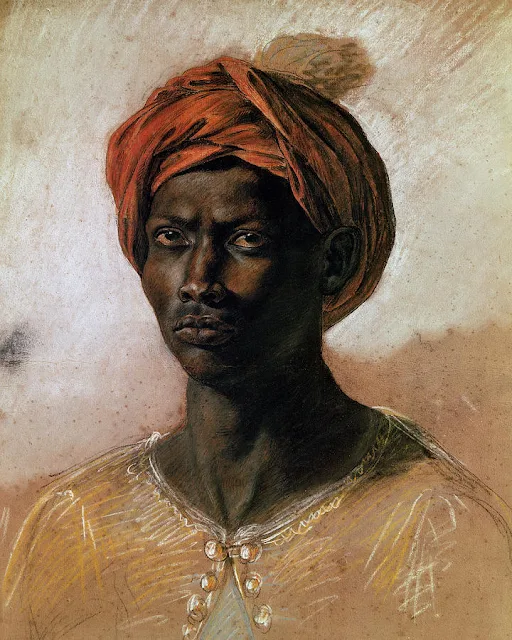Ferdinand-Victor-Eugène Delacroix (1798 – 1863) was a famous French painter, draft-person, lithographer, writer, art critic but most of all, he was regarded as the leader of the French Romantic school. His masterpiece Liberty Leading the People, inspired by the French revolution, famously and truly embodied the French Romantic artistic ideals.
Delacroix was born in Charenton Saint-Maurice near Paris. Orphaned at age 16, he became a massive follower of the Neoclassical painter Jacques-Louis David and a talented you artist. Early in his career, Delacroix received several coveted commissions for public buildings. He painted large, typical of the current Neoclassical style in vogue during this time.
While his contemporaries drew inspiration from classical Greek themes and the Italian Renaissance painters who valued simplicity and calm grandeur. Delacroix was unique in that he was inspired by the brushwork of the famous Peter Paul Rubens, and he drew his inspiration from the Venetian Renaissance painters. They valued the sensuous and appealed to the viewer's emotions.
Delacroix eventually studied under the famous artist, Théodore Géricault. He even posed as one of the figures in the grand and famous Raft of Medusa masterpiece. After the painting's completion, he was deeply influenced by the effects of its magnitude, and he began to use his art to make bold statements that revolved around an emotional response. He even tackled scenes with severe violence. The "man versus nature" theme and the use of emotion became typical of the Romantic movement during its height from 1800 - 1840.
Géricault's Raft of Medusa and Delacroix's Liberty Leading the People are two of the most famous pieces representing the French Romantic period. The Romantics' intent was to harness the power of imagination and take the viewer on an escape from their everyday lives. Romanticism was a counter-reaction to the industrial revolution and the past Age of Enlightenment.
“I do not care for reasonable painting at all. My turbulent mind needs agitation, needs to liberate itself. There is in me some black depth that must be appeased.”
-- Ferdinand-Victor-Eugène Delacroix
In 1832, Ambassador Charles de Mornay asked Delacroix to embark on a mission that would smooth over public relations with Morocco's Sultan Moulay Abd al-Rahman, and he couldn't refuse. He traveled through Spain, Tangiers, Algiers, and Morocco. He soon began painting architecture and the subjects he encountered in North Africa. The ancient, proud, and exotic culture moved him to write, "I am quite overwhelmed by what I have seen."
If you ever can see one of Delacroix's original paintings in person, be sure to get up close and observe his unique brushwork. It will reveal the artistic genius, which is still revered even by today's contemporary art critiques, and his work is much appreciated here!





